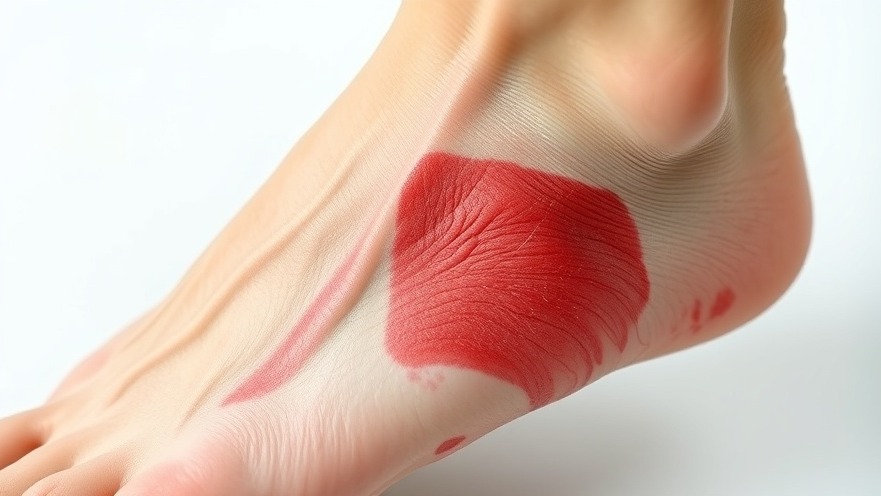
Understanding the Link Between Diabetes and Foot Complications
For millions of people managing diabetes, the ongoing struggle comes with a hidden yet critical aspect: foot health. Diabetes can lead to severe complications, including infections, ulcers, and even amputations, making it vital to monitor early signs of foot complications. With proper awareness and care, the majority of these issues are avoidable.
Key Factors That Impact Foot Health in Diabetics
The International Working Group of the Diabetic Foot (IWGDF) emphasizes four main factors that affect foot health in individuals with diabetes: blood glucose levels, nerve health, blood supply, and foot structure. High blood sugar levels hinder the immune system, making it challenging for the body to heal minor injuries like cuts or blisters effectively. Regular monitoring of blood glucose levels, particularly by checking HbA1C every three months, is crucial for maintaining overall health.
Recognizing Nerve Damage Early
Nerve health is another critical consideration. Elevated glucose levels can damage nerves, leading to diminished sensation in the feet. Early indicators include unusual sensations such as numbness, tingling, or increased sensitivity. It’s vital to be proactive about foot sensitivity—oftentimes, patients don’t realize they have developed a wound until they feel discomfort weeks after the injury. Regular foot assessments by a podiatrist can help in identifying these nerve problems before they escalate.
The Importance of Blood Supply
Proper blood flow is essential for healing injuries, and diabetes can cause narrowing of blood vessels, which can impair circulation. Affected individuals may experience cold feet, swelling, or changes in skin color, indicating reduced blood flow. Regular checks of foot pulses and perfusion can be done during podiatric visits and should be part of routine care for diabetics.
Foot Structure As a Risk Factor
Foot anatomy plays a unique role in foot health. Deformities like bunions, hammertoes, or high arches can increase vulnerability to complications. Regular check-ups will help monitor any structural changes and provide necessary interventions.
Proactive Measures to Reduce Risk
Maintaining an active lifestyle and a balanced diet is essential in helping control blood glucose levels. Foot care routines should include daily inspections to catch injuries early, using appropriate footwear, and offloading pressure from any wound to facilitate healing. Podiatrists recommend adopting lifestyle changes, such as engaging in regular exercise and managing weight, all of which contribute to overall health management.
Conclusion: Empowering Yourself for Better Health
Diabetes-related foot complications are prevalent but preventable with education, regular check-ups, and proactive foot care. Being attentive to the body’s signals can make a significant difference. Schedule a regular appointment with a podiatrist who specializes in diabetic foot health to discuss personalized strategies to maintain foot wellness and prevent complications.
 Add Row
Add Row  Add
Add 




Write A Comment